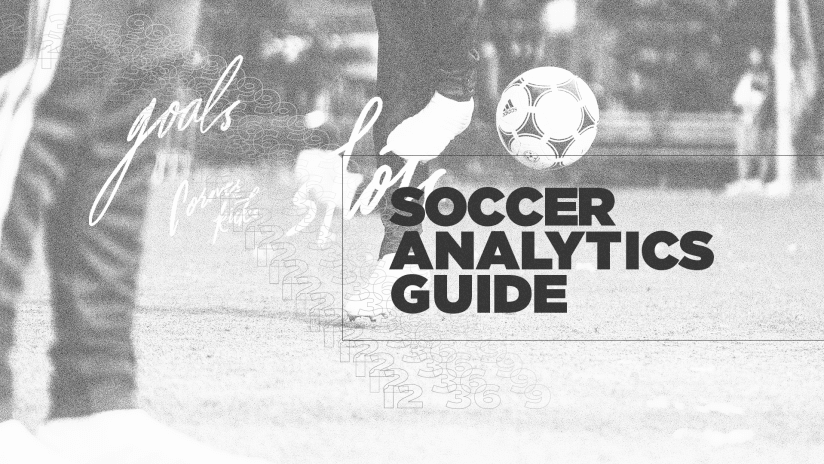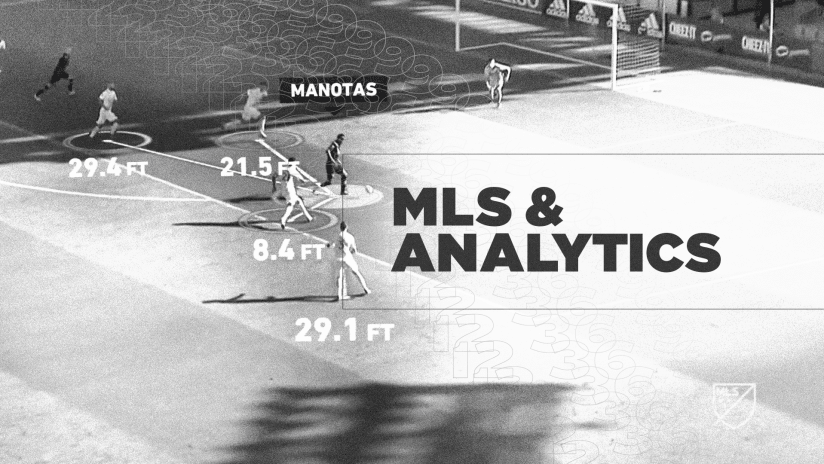There is still a lot we don't know about data and analytics in soccer. It's a specialized field that is shrouded in secrecy and often times simply misunderstood.
And we know even less about the people who are leading the charge.
MLSsoccer.com spoke with members of the MLS analytics community and they took us behind the curtain to share their typical days, their biggest pet peeves, favorite metrics and the least understood aspects of their gig.
What's a normal day like?
- New England Revolution analyst Tim Crawford: “It’s kind of like being a consultant for four different areas. Whoever needs me, I’m there to do whatever they need. If sports science needs something done, we’ll work with those guys. Coaching staff, scouting and doing stuff on my own to make new things we can use.”
- Toronto FC director of analytics Devin Pleuler: "A typical day depends what part of season we’re in, it depends on whether the transfer window is open or shut. Those are the primary variables that determine what I’m working on. … During the season, a large portion of my time is spent on the week-to-week grind of opposition analysis and postgame analysis."
- FC Cincinnati director of soccer analytics Alexander Schram: “A normal day for me is probably a 50/50 split. There's 50 percent between meetings with technical staff, scouts and people who know the game, and 50 percent on my laptop getting the data and analyzing it.”
Biggest pet peeve?
- Schram (Cincinnati): “One of the things I don’t like when I talk to people about my job, they always come up with the movie ‘Moneyball’. The problem with soccer is if a player has the ball in midfield, he has an infinite amount of options. Sure, 99% may not be good options, but he can do everything with it. That makes it hard for this game to be completely data-driven."
- Philadelphia Union data analyst Dean Costalas: “To say one stat matters the most or correlates to winning, that’s not so much true. It’s about building a story.”
- Crawford (New England): “I think there’s a perception that this takes fun out of the game. I’m not losing any bit of my fandom or appreciation because I’m looking at numbers and information. I think it adds to the caginess of it all."
- Colorado Rapids first-team analyst Jase Kim: “One thing that throws me off a little bit is when people don’t understand the style of play. You can’t really criticize something without knowing what the coach wants. How do you know a player wasn’t specifically told to do something? I'm not talking about a player losing possession or misplacing a pass, those [actions] you can criticize. That’s objective. But let’s say there’s a team that goes a little long at times, but you’re required to do that. Let’s say you’re playing LAFC. If you’re under pressure, you have to go long. But people will scoff and say the team is just trying to play long ball. But you have to understand the style, the specific game. It’s just so easy to say ‘ugh, why can’t we play like Man City.' How many teams in the world can play like Man City?! Only Man City! And even look at them, they perfected it, but crumbled this season! There’s just a sense of such high expectations.”
Favorite metrics?
Analysts can't really disclose too many specific favorite metrics — that information is valuable, of course. But they shared some hints as to how they view the game.
- Schram (Cincinnati): “This is actually one we call the N’Golo Kante Index, because he’s one of the players who does this best: For a center mid, what's the ratio between number of times he wins possession vs. number of turnovers? That’s something we do a lot, we try to look at two different available metrics and combine them into one." (MLSsoccer.com recreated the N'Golo Kante Index below using available data from the 2019 season.)
- Nashville SC director of strategy and analytics Oliver Miller-Farrell: “There are a ton of amazing things happening in the industry now, but I think it’s important to appreciate that more sophistication doesn’t always mean more intelligence. Sometimes, simple insights are the most actionable, ones that are really valuable and functional."
- Crawford (New England): “Just trying to come up with new project ideas. You see a similar type of format on research papers, people have things they want to investigate. So we’ll come up with a question that interests us. Like, for example, what’s the best way to take a corner kick? Rarely is there a "best" way. There are a lot of different ways. But we’ll look into the data, a lot of times that turns into something we use on a regular basis. What’s the best way to take a corner kick, becomes 'what are the different ways teams are taking corner kicks,' which becomes 'how does the team we’re playing take corner kicks,' which becomes 'what players are really good at taking corner kicks,' which becomes 'should we scout players who are really good at taking corner kicks?
Least understood part of the job?
- Pleuler (Toronto): "A good framework to think about soccer analytics: The two most important things are quantifying how valuable is this and how difficult is this. For example, each pass has a separate measurement for difficulty and value. We can quantify that any way we want, whether it’s on an individual level, a team level, a particular game or a team over a season. Just looking at how teams have operated on that risk/reward, it’ll give you a decent understanding of a player’s decision-making ability to a certain degree.”
- Schram (Cincinnati): “I think the focus is currently maybe too much on expected goals (sample xG map pictured below]). Yes, expected goals give you a better sense of how the game went than actual goals and, yes, it’s a very useful metric, but the question is: how do you end up with more expected goals than your opponent? It’s more of an outcome than an explanatory variable. I’m interested more in discussions of how can we find metrics that predict the outcome of the game and expected goal difference in the game.”
- Crawford (New England): “Defensive statistics, things like tackles. Analysts have known for a while that they’re assigned with something bad happening. Tackles are usually pretty desperate, it’s not a good sign. Guys who are making a ton of tackles, there’s a lot of context there: How good is their team? Does it mean they weren’t in the right position? But we don’t have a great answer yet on what good defensive statistics look like. Hopefully tracking data will help.”














